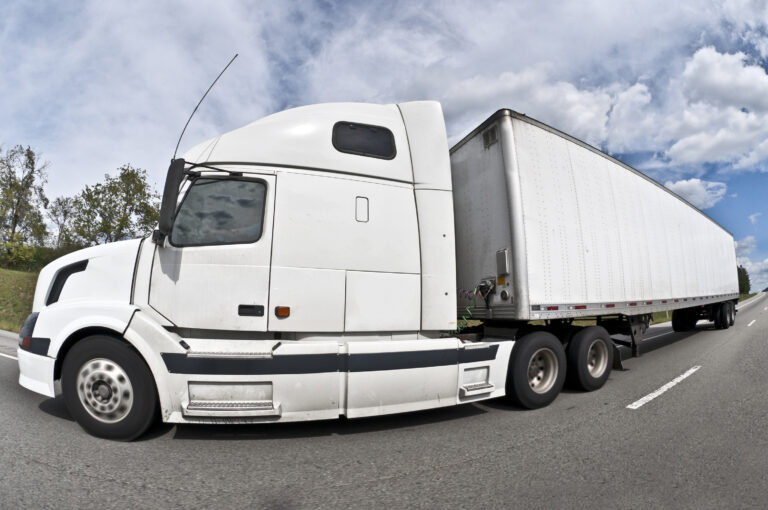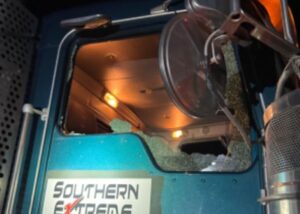A Congressional Budget Office (CBO) report released in October is an initial step in considering revenue options to stabilize the Highway Trust Fund (HTF), the nation’s primary source of funding for roadway maintenance and construction. Based on current projections, without changes in laws to provide additional revenue for the HTF, the fund will be drained by 2022. Likewise, the annual HTF deficit of $13 billion in 2017 will continue to increase as it has almost every year since 2001.
The focus of the CBO report is a federal tax on commercial shipping via roadways based on vehicle miles traveled (VMT). The report looks at how a VMT program would alter CBO projections during the upcoming decade using 2017 baseline data.
In 2017, expenditures exceeded revenues by 31.7%. Analyzing these figures and data including the types of trucks using the highways and projected inflation rates, the CBO estimates the HTF will be insolvent within three years. The report considers how a VMT tax on commercial vehicles might improve this outlook.
The VMT tax is not a new concept. Four states—Kentucky, New Mexico, New York, and Oregon—all use a VMT tax as a revenue stream. However, the tax rates, structure of the various programs and compliance rates among truck owners vary.
For instance, Kentucky levies the tax on vehicles rated greater than 60,000 pounds. New Mexico, New York, and Oregon base tax rates on registered weights. The Kentucky tax is a flat 3 cents per mile for all trucks above the weight threshold, while the remaining states’ tax rates vary from 1-29 cents per mile depending on weight. Tax evasion rates vary between states, ranging from 3-7% in Kentucky to 30-50% in New York. Finally, incentives for payment of VMT taxes are provided. Oregon, for instance, has the nation’s highest VMT tax rates but use the revenue source as an alternative to fuel taxes for some trucks.
The CBO report focuses on three aspects of a VMT tax—the tax base; tax rate structure; and implementation methods.
Tax Base
The CBO report specifies truck type and weight ratings as considerations in which vehicles would be subject to the VMT tax.
Taxing all commercial vehicles with six or more wheels and/or weights over 10,000 pounds are one option, while taxing only combination trucks, defined in the report as trucks hauling one or more trailers, is also considered. The truck types were separated based on 2017 statistics indicating that combination trucks represent 28% of those on the highway but account for 60% of total miles driven.
Tax Rate Structure
The CBO report considered each approach the four states levying VMT taxes use in terms of tax rates. A flat rate per mile for all commercial trucks and a weight-based variable rate are options. Location and time of mileage accrual were also studied as both factors impact costs of VMT monitoring. For example, if a VMT tax is charged only on interstate miles or is increased during hours of traffic congestion, some drivers will use alternate routes, decreasing projected revenues.
Implementation
Method of implementation impacts costs of a VMT tax system. CBO studied three implementation strategies including self-reported odometer readings, Radio Frequency Identification (RFID) readers, and on-board electronic monitoring devices (EMD).
Self-reported odometer reading is the simplest monitoring method to implement and requires no special equipment. But odometer readings are only useful if the VMT tax is uniform. Reporting mileage driven on types of roads and locations would be difficult.
RFID systems are not novel; many states use them in assessing tolls. A vehicle’s tag number is recorded where it enters and exits the toll road, and the registered owner receives an invoice. Costs of equipment, however, would be substantial, estimated in the “tens of billions” of dollars.
CBO also considered electronic monitoring devices (EMD) as an implementation tool, estimating that 25% of trucks will soon carry EMDs to regulate driver hours behind the wheel. EMD monitoring costs will vary by the number of trucks subject to the VMT tax, and trucking firms will likely balk at the mandated expense. Driver concerns may also arise with an EMD system as many will consider government monitoring an infringement on privacy.
Report Conclusions
The CBO report suggested a VMT tax could be effective depending on the tax rate per mile.
Assuming 90% compliance, a uniform rate of 9.5 cents would match 2017 HTF revenue collected and cover the $13 billion shortfall.
In terms of consumers, the report states that a VMT tax would be regressive. Most people purchasing goods delivered by trucks are in lower income brackets, and economic reality suggests the cost of increased taxes will be absorbed by consumers. Those who pay a greater percentage of household income to cover the tax will suffer financially.
Ultimately, the report’s most important finding may be included in its introduction: “The costs to the government of implementing a VMT tax on trucks are uncertain but would be higher than the costs of the existing tax on diesel fuel.” In other words, adjusting existing revenue-generating laws would be more cost-effective than implementing a VMT tax system.
Overall, the CBO report does not provide detailed analysis of any aspect of a VMT tax. Any federal government report consisting of 43 pages can offer little more than an overview of the subject at hand. The report does, however, provide insight into the measures the government might consider keep the HTF sustainable. A VMT tax is just one of several options at lawmakers’ disposal.
Since retiring from a career as an outdoor recreation professional from the State of Arkansas, Kris Rutherford has worked as a freelance writer and, with his wife, owns and publishes a small Northeast Texas newspaper, The Roxton Progress. Kris has worked as a ghostwriter and editor and has authored seven books of his own. He became interested in the trucking industry as a child in the 1970s when his family traveled the interstates twice a year between their home in Maine and their native Texas. He has been a classic country music enthusiast since the age of nine when he developed a special interest in trucking songs.








